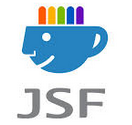This tutorial is a step-by-step guide for how to create web project in Eclipse using Maven. It is simple tutorial for the beginners. It is a step-by-step tutorial for creating a simple Maven project in Eclipse IDE. In my earlier tutorials, I have written about Create Web Application Project With Maven and How to write custom plug-in …
Eclipse
Spring Roo + Spring Data + MongoDB Repositories Integration
Since Spring Data includes support for MongoDB repositories, we can use MongoDB as a persistence option when using Roo. We just won’t have the option of using the active record style for the persistence layer, we can only use the repositories. Other than this difference, the process is very much the same as for a Spring ROO …
Spring Roo + Spring Data JPA Repositories + Eclipse Integration
Spring Roo is a rapid application development tool for Java developers. With Roo, you can easily build full Java applications in minutes. This tutorial isn’t intended for providing full coverage for Spring Roo, rather it should spot the focus to provide a good introduction for using Spring Data inside those applications that built with Spring …
JSF + Groovy Integration
Groovy is another popular programming language for the Java Virtual Machine. Groovy is dynamically typed, and groovy code can be more concise than the equivalent Java because you can omit types of variables and parameters. Almost any Java code is legal groovy, that’s make it simple and easier for getting started using it. Ultimately, using the Groovy …
JSF 2 Installation & Configuration Using Eclipse
JavaServer Faces (JSF) is a server side component framework for building Java Technology web-based application. JavaServer Faces (JSF) consists of two main parts: The JavaServer Faces API for representing components, managing their states, handling events, handling server side validations, and achieving data conversion; defining pages navigation, supporting internationalization and accessibility and providing extensibility for all these …
Create JSP Page in Eclipse
Java EE Tutorials JSP Tutorials Recommended Books for Java Server Pages (JSP) Simple JSP Example using Eclipse Let us write a simple JSP code using Eclipse IDE and execute it using a web application server (Tomcat). Tools Used We are using the following tools to write and execute our JSP code: Java 7 Eclipse IDE …
How To Resolve “Resource Is Out Of Sync With The Filesystem” Error in Eclipse?
The error in eclipse IDE Resource Is Out Of Sync With The File system happens many time when the resource is out of sync and may be updated by some other sources. We need refresh each time by default to load that files. There is settings in eclipse to permanently fix this problem. Look at …
How To Increase Heap Size in Eclipse?
If you get the error java.lang.OutOfMemoryError: Java heap space while running Java applications, it means that your Java application environment don’t have the sufficient space to store the values needed for your application. This could be because of the following reasons: By mistake, you have set the less memory for your Java environment (or) Your …





